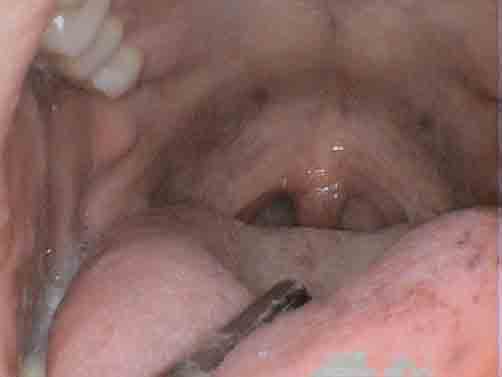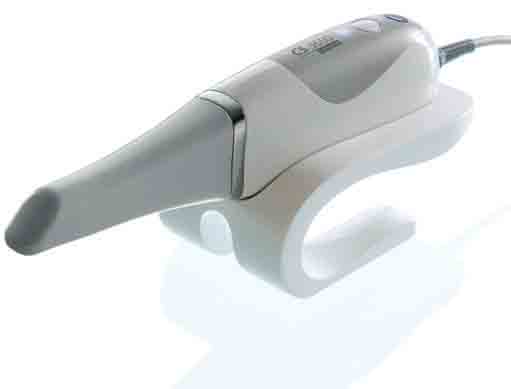Brandon Darcangelo, Carestream Dental’s CS Solutions and Educational Institutes sales director, recently sat down with Dr. Stephen Poss to discuss the growing demand for sleep devices, the tools to make a sleep practice successful and where the specialty will go in 2019.
We’ve seen a huge jump in the spread of sleep dentistry and the demand for sleep appliances. Why do you think that is?
Awareness around obstructive sleep apnea (OSA) has grown as medicine and dentistry have taken a more integrated look at our health. Doctors from across many specialties such as cardiology and pulmonology, are recognizing the significant ways that sleep, or lack thereof, can influence the quality of our lives. The word has gotten out to patients. They are learning about the risks of going untreated – hypertension, stroke, atrial fibrillation, just to name a few. They might not know what kind of therapy might be best for them, but they do know a friend or relative who’s receiving treatment or they found something during a Google search. Patients are coming to dentists by their own volition and requesting specific treatment for sleep apnea.

Also, though it varies by case, some patients are looking to sleep appliances as an alternative to CPAP machines, which can be cumbersome, claustrophobic and can even cause colds and flus if not properly cared for. Of course, the CPAP is the standard choice, but patients often much prefer a discrete sleep device to treat their mild to moderate OSA. For example, I had a 20-year-old male patient present at my practice. He didn’t want to lug a CPAP machine to college with him. The CS 9300 CBCT system (Carestream Dental) was used to acquire a 3D volume and the CS Airway module was then used to visualize restrictions in the airway. Having a color-coded visual tool for case presentation helped the patient understand why one course of treatment was better than another. In his case, the restriction was purely genetic; however, a sleep device could improve his sleep apnea between 70-80 percent. He was able to make an informed decision about the success of treatment and was perfectly happy to use a sleep device rather than a CPAP machine while at school.
With this growing demand, what are some of the tools you’ve found useful to run a successful sleep practice?

Like most of the trends in dentistry these days, the answer is digital. I’m sure practicing sleep dentistry and creating sleep devices could be done with traditional impressions, but what has really streamlined things in my practice is the use of an intraoral scanner. There’s obviously less mess without having to deal with PVS materials and trays and it’s also more accurate1 for ensuring the device fits correctly and functions properly. I use a CS 3600 (Carestream Dental) to acquire 3D impression models; it’s part of an open system so I can choose which lab I work with. There’s a growing number of labs specializing in mandibular advancement devices, which has also contributed to the spread of sleep dentistry. I use several oral appliances like ProSomnus and Panthera. I can upload the scanned files while the patient is still in the office, which makes for a quick turnaround from the scan to the appliance.
I also rely on my CBCT system for 3D scans and a full field of view of the airway and TMJ, as the more images I can provide for insurance purposes the better. The colorful 3D images also aid in case acceptance and patient education. Of course, having the CBCT scans and 3D digital models help with documentation when it comes to liability, which is just as important to sleep dentistry as it is to orthodontics. For example, I recently had a patient bring in a nearly new, clearly unused sleep device. He claimed the device had worn down his teeth, but I was easily able to pull up the documentation from his first appointments and point out that that’s simply how they were to begin with.
Obviously, patients are seeing huge benefits from sleep dentistry regarding their overall health and quality of living, but what are some of the benefits you’ve seen as a doctor?

Over the past 10 to 15 years, I’ve worked to expand the sleep side of my practice so I can provide patients in my region with the best overall care. Sleep dentistry truly changes people’s lives and it’s gratifying to see how relieved and happy people become with quality sleep.
I’ve also noticed that it’s easier to work with referrals thanks to my digital workflow. Patients usually come to me for one thing – their sleep device – and once they have it they go back to their general practitioner. However, down the line if they crack a tooth and need a crown, it’s important that the restoration follows the exact contours of the device or it won’t fit. This can cause a lot of stress for a patient (and the restorative dentist.) Not only is the patient dealing with getting a new crown, but they’re terrified the device that has changed their life might not fit anymore. The dentist has to adjust an unfamiliar device without confidence that it will fit well enough again. Insurance only covers one sleep device every three to five years so if the new crown is slightly off the patient has to pay for a new one out-of-pocket. Instead, I can send the patient’s digital impression to the GP or the GP’s lab and indicate that they make the shape, height and contours of the crown to the exact specifications of the natural tooth that was scanned when the sleep device was fabricated. The GP and the lab has all the information they need, and the patient is assured their device will still fit.
We’ve already discussed the growth in sleep dentistry, but where do you see it going from here in 2019?
I believe sleep dentistry today is what implants were 10 years ago. The growth we’re seeing is amazing, and, much like implants, it’s being fueled by technology and advanced education. First, new software will be a gamechanger for doctors practicing sleep dentistry. For example, the latest version of the CS 3600’s acquisition software includes Multiple Bite Capture. This allows doctors to capture up to three different bite registrations, which are necessary for the labs to design and manufacture sleep devices. The registrations are captured in one scan and the bite matrix files can be exported as one file and sent with the dataset to the lab and viewed in its CAD software. Additionally, we’ll see more continuing education and advanced training opportunities to support doctors interested in sleep dentistry. This education will ensure doctors are providing their patients with the best care as they expand the services they can offer.
Further growth of sleep dentistry will be powered by increasing patient demand. Just within the past few years, we’ve seen numerous articles about sleep apnea and its dangers in patient-facing publications, such as the New York Times and Forbes. As previously mentioned, this means patients will be specifically seeking doctors and coming to appointments more informed about OSA than in the past. Our profession needs to be prepared to handle the tidal wave of patients so we can provide the life-changing treatment they need.
For more information about how other dentists have used digital workflows for sleep practices, read “The Standard of Care has Been Elevated”.

